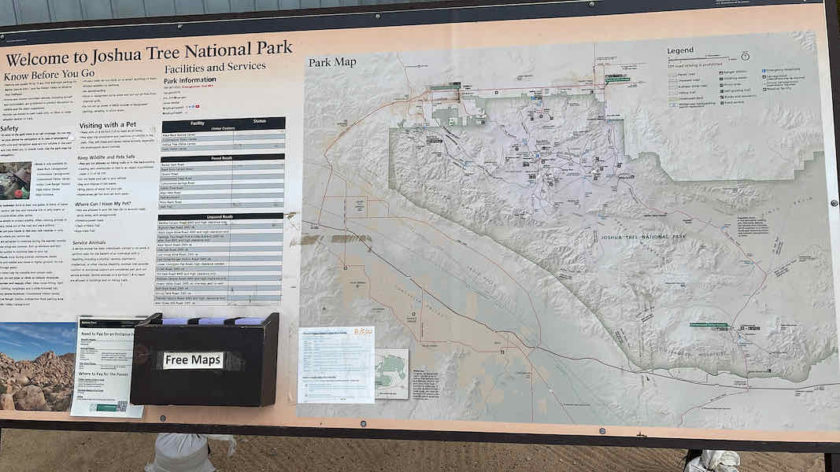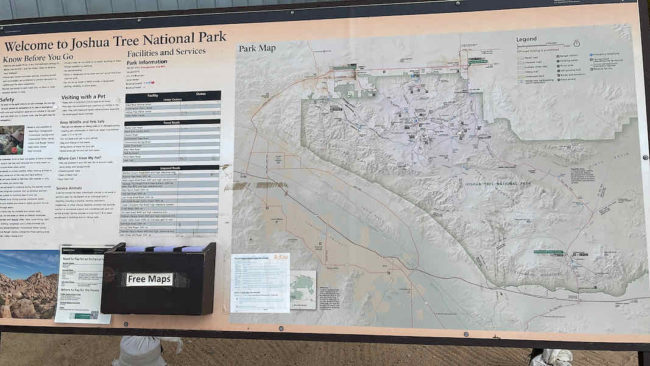
Last week I was in San Diego for some meetings and took a day out to go visit Joshua Tree National Park. If you ever get a chance then I highly recommend going for a visit. If you do it, then invest at least a day into it so that you get the most out of it.
The phone box story is coming up. First, permit me the luxury of babbling about the park for a bit.
Practical obvious stuff – Be wise, bring lots of water, trail snacks, sunscreen, a hat, and a decent pair of hiking boots, and also grab a free map. Also ask the rangers for tips on the good hikes. Flash floods are a real risk at the southern end of the park so be weather aware as well.
Joshua Tree National Park is named after the famous Joshua trees which are native to the Mojave desert. What might surprise you is that current research suggests that the Joshua tree population faces the distinct possibility of being reduced by 90% by the end of this century due to climate change. If that sounds surprising then consider the thought that the Dome fire in 2020 by itself took out 1.3 million Joshua trees – that was about 25% of all Joshua trees.
So here is a picture I took last week …
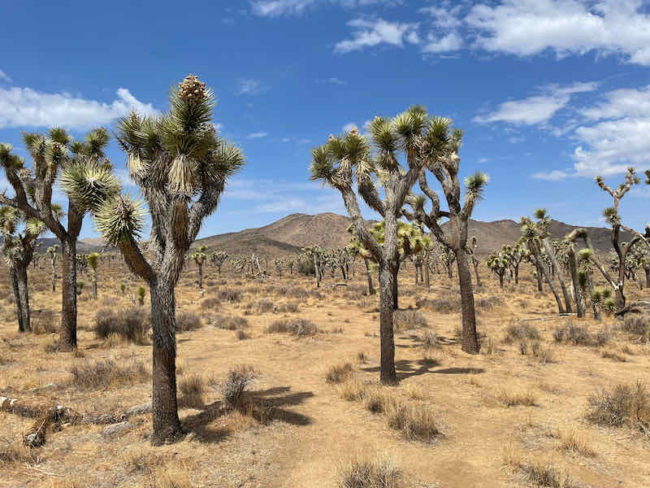
… and slightly closer …
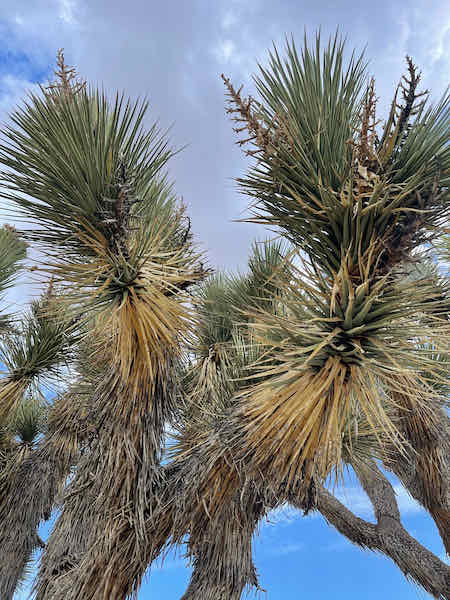
Fun fact: It’s not actually a tree, but instead is a variation of a Yucca that can grow at the rate of about an inch a year up to 40 feet.
Why is Joshua Tree Park so special?
The zone that these trees live in is the higher and cooler parts of the Mojave, hence is a rather special and unique habitat. Unfortunately, by about 2099 the current estimate is that temperatures will have increased by about 8 degrees F. That will make it too hot for Joshua Trees to grow in.
What is rather astonishing is that there are not only Joshua Trees, but also Oak trees as well. Yes seriously … desert scrub oak, Tucker’s oak, and Muller’s oak. They are remnants from a wetter past climate, and so they are also under considerable environmental stress … and yet there they are …
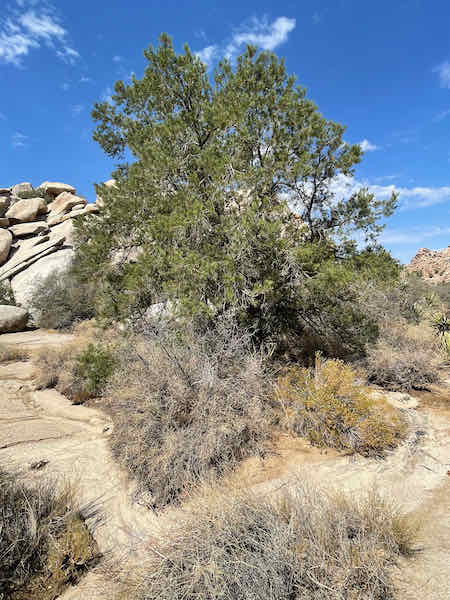
Why is it like this?
The Mojave as we know it today is most probably less that 10,000 years old. Go back far enough and you would find that pinyon-juniper woodlands dominated. As the ice age ended, and the climate became dryer, that previous conifer woodland would have retreated and so what we have left are small relic populations in high elevations and also in locations such as the hidden valley where there is still just enough moisture to enable them to cling on.
As you move east in the park into lower elevations the habitat changes and so you will find that the more traditional desert cactus dominates. It is quite frankly fascinating to find these distinctly different ecological habitats meetings each other and transitioning from one to the other as you travel east until you find this …

OK, enough on all that for now.
Hopefully it has been enough to tease you into considering a visit one day if you ever have the opportunity to do so.
I’ll now tell you the rather strange story concerning the phone booth that used to sit in the middle of the Mojave many miles from the nearest paved road.
The Mojave Phone Booth
Back in 1948 a phone booth was setup for miners working at the Cima Cinder Mine. The mine owner, Emerson Ray, requested it and so as part of the mandate that existed then to serve people living in isolated places it was installed.
Thus was born the existence of a phone booth at the intersection of two dirt tracks out in the middle of the Mojave desert roughly about 12 miles from the nearest paved road. Nothing else was near it, no other buildings, just this lone phone booth in the middle of the desert.
The phone company dutifully maintained it over the decades. At some point in the 1960s the hand-cranked magneto phone was replaced by a payphone. Then in the 1970s the rotary phone was replaced by the more familiar touch-tone model.
Personally I’d love to see the look on the face of the phone engineer who got the work order to travel out into the middle of the Mojave to upgrade the phone.
I’m sure many a bewildered and lost traveller in the desert would also have been rather astonished to randomly come across a fully operational phone booth. It would be akin to suddenly spotting a fully operational Blockbusters (Side note: Yea that happened to me, I randomly found one in Bend, Oregon, and was astonished to discover that it was still fully operational – it really is the very last one and is still there post COVID. I just had to stop, go inside, and take a few pictures).
Phone Booth Fame
Roughly around 1997 a guy in LA spotted the phone icon on a Mojave desert map and decided to go check it out. His published description of this journey of discovery went viral and so it became Internet famous (yes, there really was an internet back then).
Soon many were trekking out and camping next to it to wait for somebody to call (the number had been published, so many did also try to call the number).
Net impact – Books have been written about this lone phone booth – yes really.
Sadly all this success and attention resulted in its demise.
The National Park Service became increasingly concerned that this phone booth’s fame was attracting too much attention, too many visitors, and that this was having an impact on the environment and local wildlife. They reached out to Pacific Bell and asked them to remove it. In 2000 that’s what happened.
Needless to say a few of the remote residents who had depended upon this for communication were more than a little bit ticked off about the removal.
One Last Thought
The Phone booth is simply a fun little saga that illustrates that even in the emptiest of places weird and quirky stuff happens.
What is perhaps the real hidden secret of the Mojave is not the phone booth, but rather the observation that even in this most desolate and empty of places that sits within the rain shadow of the Sierra Nevada there is a thriving evolving biosystem that is adapting to a changing climate.
Much that is there now might indeed one day go extinct by our our hand, but Gaia will adapt, thrive, and live on.
